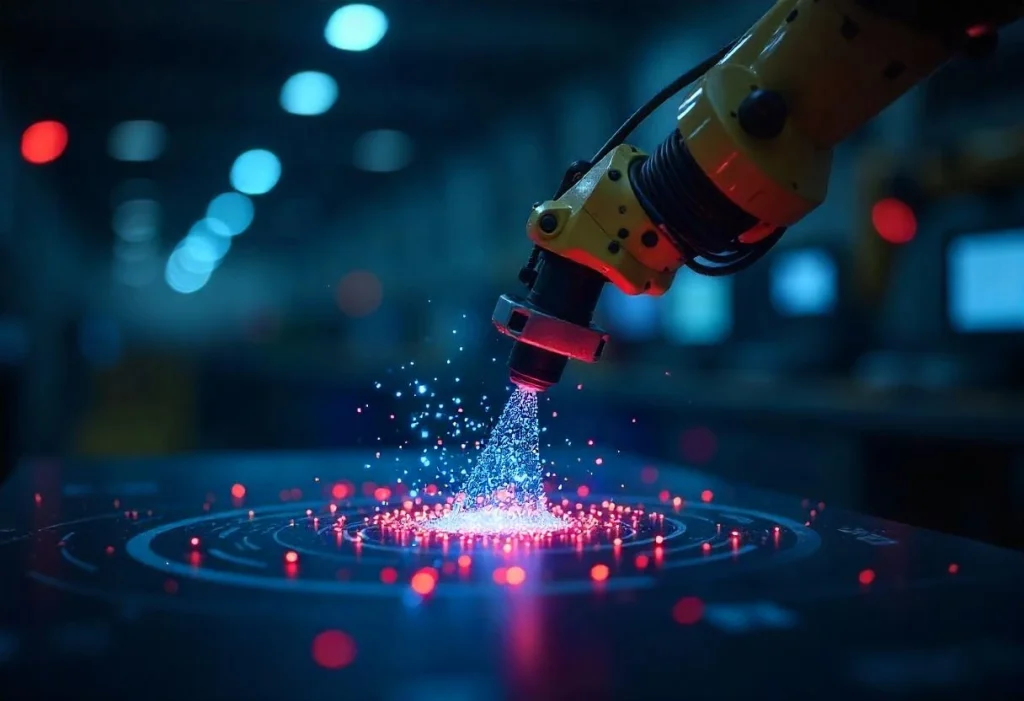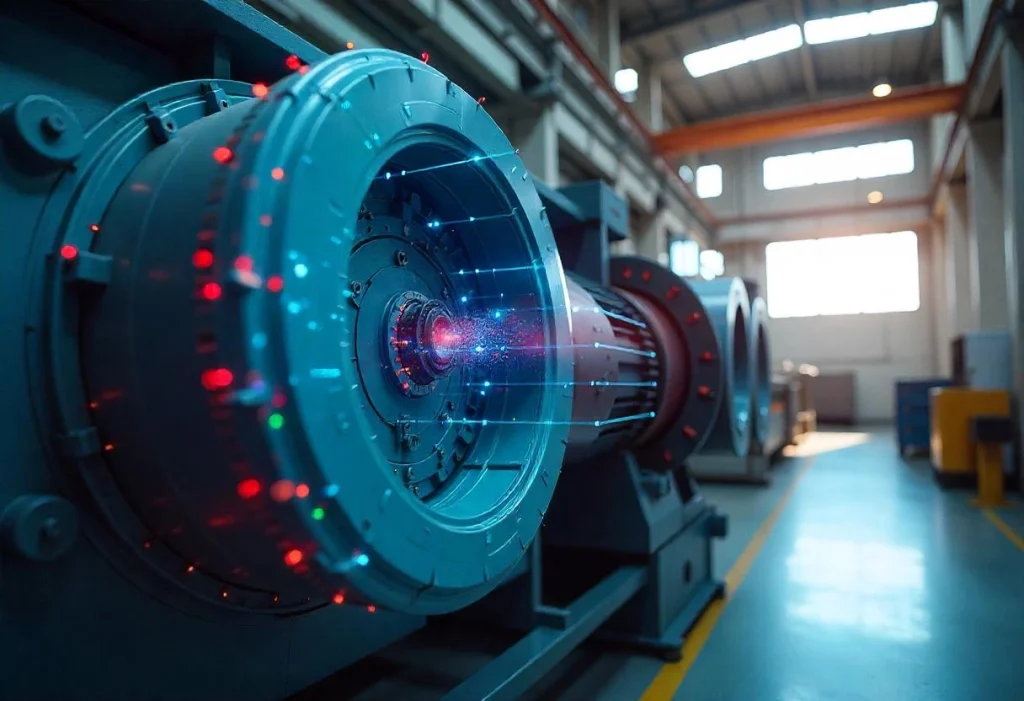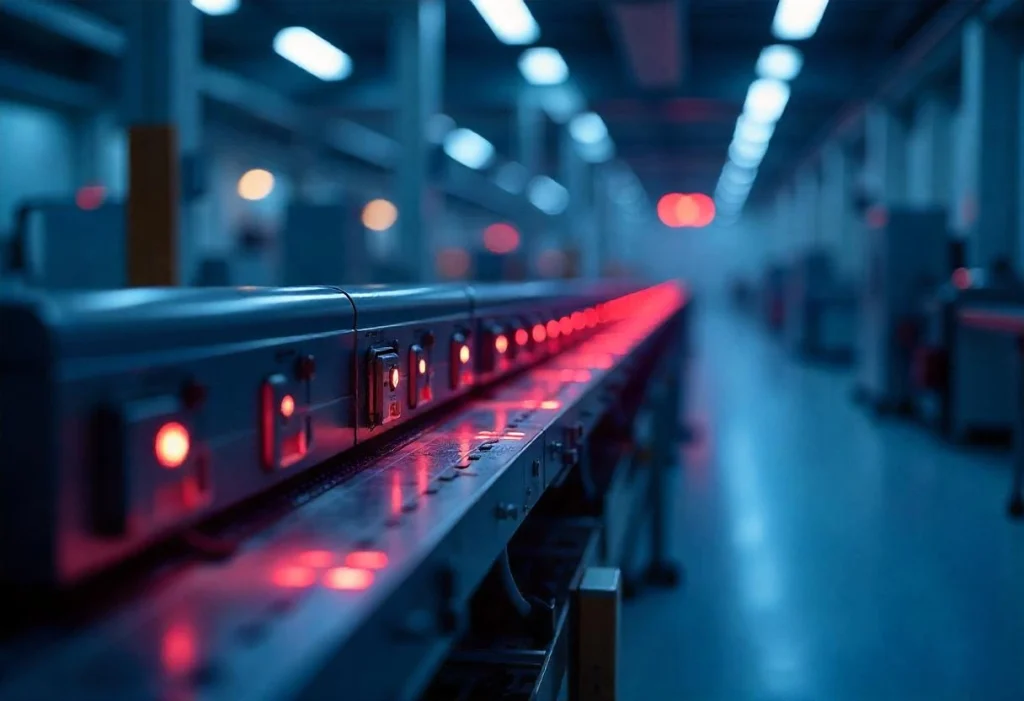
NEWSLETTER
Wpisz swój adres e-mail i zyskaj e-booka
Bez niechcianej poczty ani reklam
Tylko merytoryczne treści z obszaru digitalizacji produkcji

In almost every manufacturing plant, at least once there has been a situation in which there has been an unplanned shutdown of machinery. Such events can generate huge costs, delays and disrupt the flow of production.
Traditional maintenancemethods often prove inadequate, and scheduled maintenance does not always effectively prevent failures.
An effective solution for predicting and avoiding defects is to use predictive maintenance – predictive maintenance.
By analyzing data from machines and sensors and using modern technologies such as artificial intelligence and the Internet Of Things (IoT), it is possible to monitor the condition of equipment in real time and optimize its servicing.
How does this model work and when is it worth implementing? You will learn the answers to these questions in this article.

Predictive maintenance is a strategy based on continuous monitoring of operating parameters and analysis of collected data. This activity makes it possible to predict machine failures, often long before they actually occur.
Through the use of modern technologies, predictive maintenance allows for more informed and efficient management of machine conditions.
Integration of monitoring systems with real-time data analysis enables optimization of maintenance operations, minimizing the risk of failures and unplanned downtime.

Maintenance strategies are changing as technology evolves. This offers increasingly effective methods to prevent failures and minimize delays.
These strategies can be divided into four main levels, differing in their approach to machine servicing and the degree of sophistication of data analysis. These are:
Each of these levels has its uses, but it is predictive maintenance that offers the greatest opportunities for process optimization.
Through the use of data and advanced analytics, it not only avoids failures, but also increases operational efficiency for the entire production facility.

Implementing predictive maintenance in a factory brings a number of benefits. They go far beyond mere failure avoidance. The use of data and intelligent analysis makes it possible not only to improve machine reliability, but also to streamline the entire production process.
Implementing predictive maintenance is an investment that translates into real savings and higher operational efficiency.
The opportunities associated with reducing downtime, optimizing costs and improving production quality make this strategy one of the most important elements of modern maintenance management.

Get 5 chapters of the book for free!
Join the newsletter and gain access to 40% of the book
“15 Steps to Buying an Information System“.
Not every machine requires the use of predictive maintenance. But in many cases, such a strategy can significantly improve process efficiency.
It is especially worth considering where failures cause high costs or major disruptions to production schedules.
This includes:
The decision to implement predictive maintenance should be based on a thorough analysis of potential losses due to downtime and maintenance costs.
In situations where machine reliability is important, predictive maintenance can become not only a cost-effective, but even an advisable solution.

Integrating predictive maintenance is a process that requires proper preparation and customization to the specifics of the plant.
To ensure the effectiveness of this strategy, it makes sense to approach the subject in stages, starting with an analysis of current maintenance procedures and gradually implementing more modern technologies.
We should start by diagnosing the current system and seeing what machines are most likely to fail and what costs this generates.
Then we move on to the selection of appropriate sensors and data analysis systems – introducing condition monitoring is the basis for predictive maintenance.
The next step is integration with existing MES and EMS class systems, allowing the collection of data on energy consumption and machine load. After that, we focus on implementing AI-based analytical algorithms to predict machine failures.
The last step is to test and optimize the process – gradually we should adapt the predictive strategy to the actual conditions of the plant.
The transition to predictive maintenance does not have to be a revolution, but a well-planned evolution of the maintenance strategy.
Incremental implementation and optimization allow the full potential of predictive analytics to be realized. This translates into greater machine reliability and operational efficiency.

The use of predictive maintenance is taking place in many industries.
In the automotive industry, it allows monitoring the operation of, for example, body presses, which minimizes the risk of downtime and loss of raw material.
In the chemical industry, it analyzes, among other things, the parameters of pumps and reactors, which prevents failures that can result in process interruptions.
In logistics, predictive maintenance is used, for example, in monitoring the operation of conveyor belts and warehouse robots, increasing the efficiency of the entire supply chain.

Predictive maintenance is one of the most effective ways to optimize machine operation.
By using advanced technology, companies can avoid costly downtime, minimize the use of spare parts and improve overall production efficiency.
In the era of Industry 4.0, this type of approach is becoming not just an option, but a necessity for companies that want to compete in the market through efficient use of resources.
Implementing such a system requires investment, but it can bring significant savings and improve the stability of production processes.
If you’re interested in this topic and want to learn how to avoid costly breakdowns and maximize machine life, be sure to watch the latest episode of Digitalizuj.pl
In it, I discuss how predictive maintenance works, what technologies are behind its effectiveness and what real benefits it can bring to your factory. Find out how to implement these solutions in practice and gain full control over the technical condition of your machinery fleet!